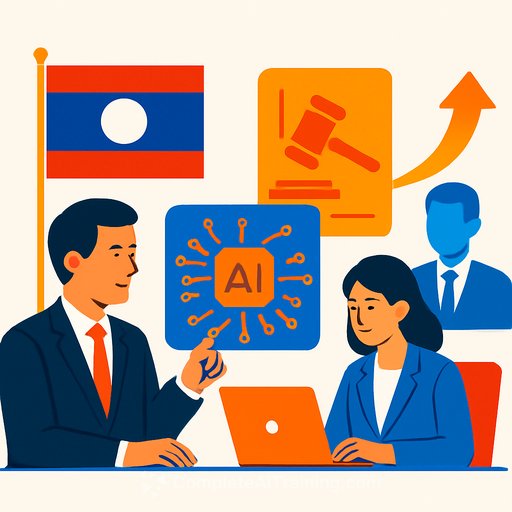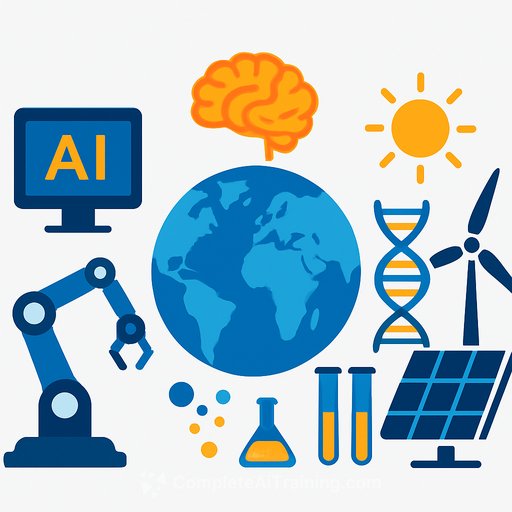Laos moves to integrate AI into legal education and practice
Legal educators, law firms, and policy leaders in Vientiane gathered to align on a clear goal: bring AI into legal work and training in a serious, structured way. The focus is practical-better case handling, smarter compliance, stronger cross-border capability-especially as cooperation with China grows under the Belt and Road Initiative.
Speakers from the National University of Laos and DeHeng Law Offices outlined where AI can make an immediate difference: foreign-related work, international arbitration, compliance review, and automated contract generation. The message was simple-AI is moving from theory to daily legal workflows.
Why this matters for legal teams
- Cross-border readiness: More Laos-China transactions mean more bilingual drafting, multi-jurisdictional risk, and arbitration exposure. AI can cut time on translation, due diligence, and research.
- Talent pipeline: Law students in Laos are being trained on AI tools early, which means new hires will expect AI-enabled workflows-and outperform without them.
- Operational efficiency: Automation in document review, clause extraction, and compliance checks frees up lawyers to handle strategy and client-facing work.
Key signals from the event
- Education + practice integration: The National University of Laos will deepen cooperation with Chinese institutions to build tech-competent legal talent with an international outlook.
- Firm adoption: DeHeng's Laos office plans to push AI into client-facing services-especially for foreign-related mandates, arbitration, compliance, and contract workflows.
- New opportunities: Students will gain access to international innovation competitions and projects connected to regional legal collaboration.
Where AI fits right now in legal work
- Foreign-related matters: Draft bilingual contracts, summarize foreign statutes, and translate exhibits with higher consistency across matters.
- International arbitration: Generate first drafts of submissions, chronologies, and issue lists; surface precedent and procedural rules quickly. See reference materials from UNCITRAL.
- Compliance review: Map regulatory obligations, flag high-risk clauses, and standardize responses to recurring questions.
- Contract automation: Build clause libraries, automate NDAs/MSAs/SOWs, and route approvals with clear audit trails.
- Knowledge management: Convert memos, opinions, and templates into a searchable internal knowledge base with version control.
Governance you should set from day one
- Confidentiality and data handling: Define what can and cannot be entered into AI tools. Use enterprise or on-prem solutions for sensitive files.
- Model selection: Pick tools with multilingual strength (Lao/Thai/Chinese/English) and document-heavy capabilities.
- Human-in-the-loop: Require attorney review for any client deliverable. Track error types to improve prompts and templates.
- Bias and fairness: Document checks for consistency in risk scoring, recommendations, and automated flags.
- Auditability: Keep logs of inputs, outputs, versions, and approvals for every AI-assisted document.
Practical steps for firms and legal departments
- Start with a pilot: Choose one workflow (e.g., vendor contracts or bilingual NDAs). Measure turnaround time, accuracy, and rework rates.
- Build a clause and template bank: Standardize fallback positions for Laos-China agreements and common arbitration clauses.
- Train your team: Give associates and paralegals clear playbooks for prompts, redlines, and QA of AI outputs. If you need structured upskilling, see curated options by role at Complete AI Training.
- Appoint an AI lead: One partner or senior counsel should own policy, vendor oversight, and results reporting.
- Partner with universities: Offer real datasets for capstone projects and internships to accelerate useful tools for your practice.
About the innovation competition
The event introduced a competition open to universities, research institutions, and innovative enterprises from China and ASEAN member countries. Expect tracks aligned with legal workflows-contract automation, compliance analytics, bilingual drafting, and dispute support.
If your team operates across Southeast Asia, this is a straightforward way to scout talent and test prototypes on real matters. For context on regional collaboration, see ASEAN.
Bottom line
Laos is moving AI from classroom talk to client work. Firms that set governance early, standardize templates, and run targeted pilots will see faster delivery, cleaner risk management, and stronger cross-border capability.
The opportunity is practical: shorten the path from intake to signature, from dispute to strategy, and from training to impact. Start small, measure everything, and scale what works.
Your membership also unlocks:






